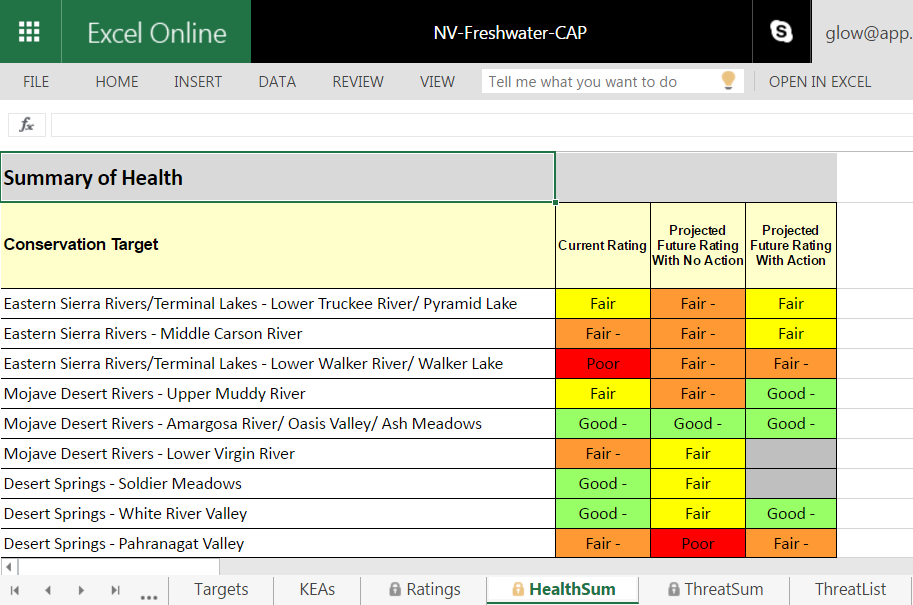TNC’s Nevada staff used a new Excel Online CAP Workbook developed by veteran coach Greg Low to develop a statewide Conservation Action Plan (CAP) for Nevada’s freshwater ecosystems (see here for full summary). The staff worked individually and in small teams from multiple locations, using the online platform and two web workshops over a two-month period in early 2016, with Greg’s assistance and facilitation.
The CAP’s primary goal was to develop high-level strategies to restore the health of and abate priority threats to freshwater ecosystems across the state, and in doing so help inform the resources needed to implement strategies.
Nevada is the driest state in the U.S., but ranks 11th in species diversity, including over 150 endemic species dependent upon freshwater ecosystems. Five major types of freshwater ecosystems were identified as conservation targets: Great Basin rivers; Mojave Desert rivers; desert springs; freshwater wetlands; and montane wet meadows. A set of focal landscapes was selected for each target.
Current and projected future health was assessed by rating five key ecological attributes — flows, riparian vegetation, native aquatic animals, physical integrity and water quality — using a new six-score grading scale. Multi-site objectives and associated strategies were developed to address critical threats and restore target health. The new CAP workbook and grading scale shows the current and projected future health of each target with and without strategic action. This also allows project teams to assess the return on investment (ROI) of pursuing alternative strategic objectives.

